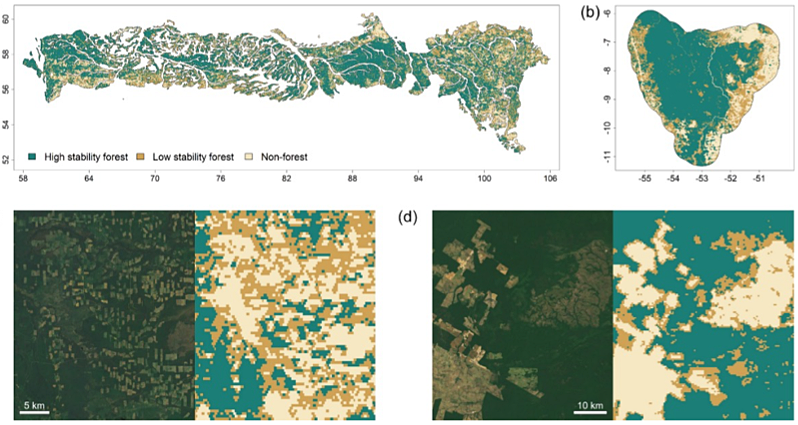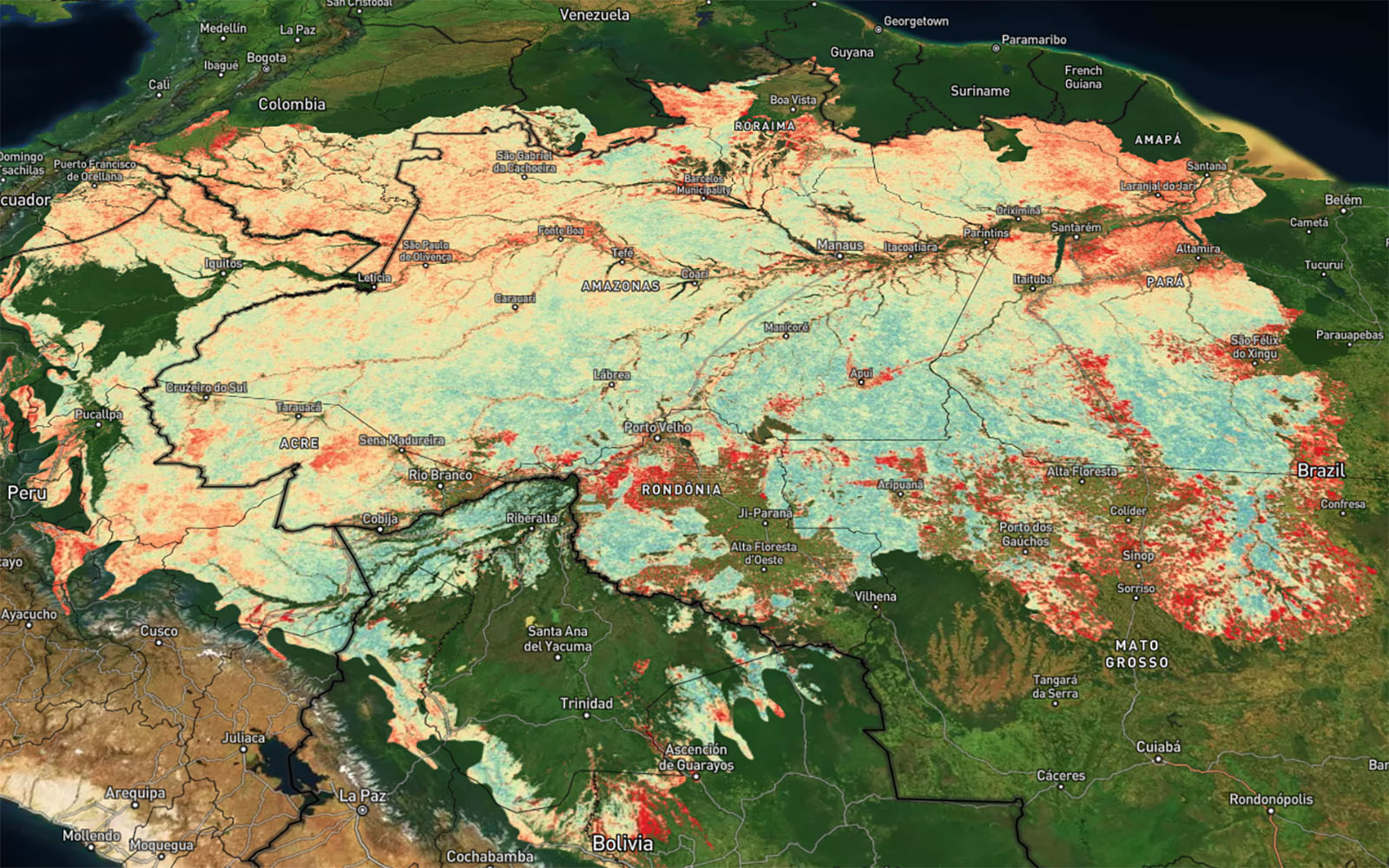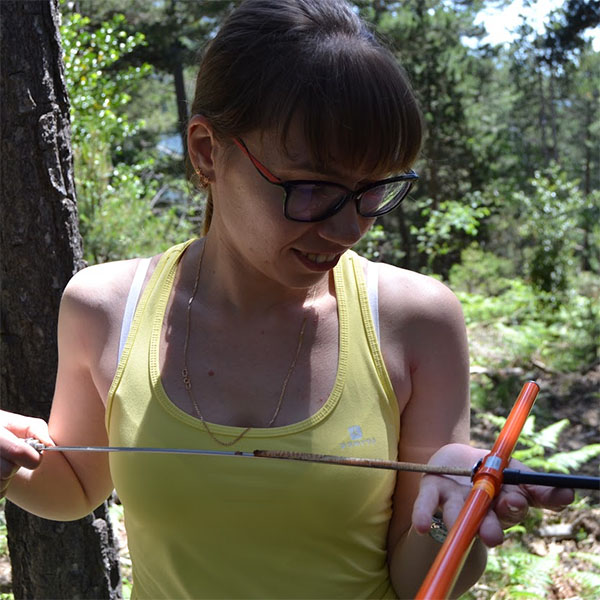Deforestation and forest degradation from human land use, including primary forest loss, are of growing concern. The conservation of old-growth and other forests with important environmental values is central to many international initiatives aimed at protecting biodiversity, mitigating climate change impacts and supporting sustainable livelihoods.
Current remote sensing products largely focus on deforestation rather than forest degradation and are dependent on machine learning, calibrated with extensive field measurements. To help address this, we developed a novel approach for mapping forest ecosystem stability, defined in terms of constancy, which is a key characteristic of long-undisturbed (including primary) forests.
Our approach categorises forests into stability classes based on satellite data time series related to plant water-carbon relationships. Specifically, we used long-term dynamics of the fraction of photosynthetically active radiation intercepted by the canopy (fPAR) and shortwave infrared water stress index (SIWSI) derived from the Moderate Resolution Imaging Spectroradiometer (MODIS) for the period 2003–2018.
We calculated a set of variables from annual time series of fPAR and SIWSI for representative forest regions at opposite ends of Earth’s climatic and latitudinal gradients: boreal forests of Siberia (southern taiga, Russia) and tropical rainforests of the Amazon basin (Kayapó territory, Brazil). Independent validation drew upon high-resolution Landsat imagery and forest cover change data.
Results indicate that the proposed approach is accurate and applicable across forest biomes, and thereby provides a timely and transferrable method to aid in the identification and conservation of stable forests. Information on the location of less stable forests is equally relevant for ecological restoration, reforestation, and proforestation activities.

Article authors
Tatiana Shestakova
Brendan Mackey
Brendan Rogers
Sonia Hugh
Additional authors
Jackie Dean, Elena Kukavskaya, Jocelyne Laflamme, and Evgeny Shvetsov.
Reference
Shestakova TA, Mackey B, Hugh S, Dean J, Kukavskaya EA, Laflamme J, Shvetsov EG, Rogers BM. Mapping Forest Stability within Major Biomes Using Canopy Indices Derived from MODIS Time Series. Remote Sensing. 2022; 14(15):3813. https://doi.org/10.3390/rs14153813





